The Regulation of MicroRNA-21 by Interleukin-6 and Its Role in the Development of Fibrosis in Endometriotic Lesions
- PMID: 39201680
- PMCID: PMC11354763
- DOI: 10.3390/ijms25168994
The Regulation of MicroRNA-21 by Interleukin-6 and Its Role in the Development of Fibrosis in Endometriotic Lesions
Abstract
Endometriosis is one of the most common causes of chronic pelvic pain and infertility that affects 10% of women of reproductive age. It is currently defined as the presence of endometrial epithelial and stromal cells at ectopic sites; however, advances in endometriosis research have some authors believing that endometriosis should be re-defined as "a fibrotic condition in which endometrial stroma and epithelium can be identified". microRNAs (miRNAs) are regulatory molecules that potentially play a role in endometriotic lesion development. There is evidence that suggests that miRNAs, including microRNA-21 (miR-21), participate in fibrotic processes in different organs, including the heart, kidney, liver and lungs. The objective of this study was to understand the role of miR-21 and the mechanisms that can contribute to the development of fibrosis by determining how IL-6 regulates miR-21 expression and how this miRNA regulates the transforming growth factor beta (TGF-β) signaling pathway to promote fibrosis. We investigated the expression of miR-21 in the baboon and mouse model of endometriosis and its correlation with fibrosis. We demonstrated that inflammation and fibrosis are present at a very early stage of endometriosis and that the inflammatory environment in the peritoneal cavity, which includes interleukin 6 (IL-6), can regulate the expression of miR-21 in vitro and in vivo.
Keywords: IL-6; endometriosis; fibrosis; inflammation; microRNA-21.
Conflict of interest statement
The authors declare no conflicts of interest.
Figures

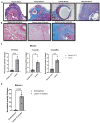
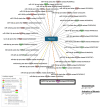

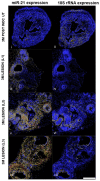

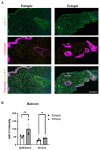






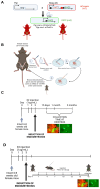
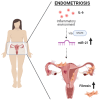
Similar articles
-
The IL-33-ST2 axis plays a vital role in endometriosis via promoting epithelial-mesenchymal transition by phosphorylating β-catenin.Cell Commun Signal. 2024 Jun 10;22(1):318. doi: 10.1186/s12964-024-01683-x. Cell Commun Signal. 2024. PMID: 38858740 Free PMC article.
-
The miRNA Mirage: How Close Are We to Finding a Non-Invasive Diagnostic Biomarker in Endometriosis? A Systematic Review.Int J Mol Sci. 2018 Feb 17;19(2):599. doi: 10.3390/ijms19020599. Int J Mol Sci. 2018. PMID: 29463003 Free PMC article.
-
Prescription of Controlled Substances: Benefits and Risks.2025 Jul 6. In: StatPearls [Internet]. Treasure Island (FL): StatPearls Publishing; 2025 Jan–. 2025 Jul 6. In: StatPearls [Internet]. Treasure Island (FL): StatPearls Publishing; 2025 Jan–. PMID: 30726003 Free Books & Documents.
-
Blood biomarkers for the non-invasive diagnosis of endometriosis.Cochrane Database Syst Rev. 2016 May 1;2016(5):CD012179. doi: 10.1002/14651858.CD012179. Cochrane Database Syst Rev. 2016. PMID: 27132058 Free PMC article.
-
Endometrial biomarkers for the non-invasive diagnosis of endometriosis.Cochrane Database Syst Rev. 2016 Apr 20;4(4):CD012165. doi: 10.1002/14651858.CD012165. Cochrane Database Syst Rev. 2016. PMID: 27094925 Free PMC article.
Cited by
-
Unveiling the fibrotic puzzle of endometriosis: An overlooked concern calling for prompt action.F1000Res. 2024 Dec 3;13:721. doi: 10.12688/f1000research.152368.3. eCollection 2024. F1000Res. 2024. PMID: 39669683 Free PMC article. Review.
-
Sex Differences in the Regulation of Interleukins in Chronic Pain: A Widely Recognized but Difficult-to-Tackle Factor.Int J Mol Sci. 2025 Apr 18;26(8):3835. doi: 10.3390/ijms26083835. Int J Mol Sci. 2025. PMID: 40332543 Free PMC article. Review.
-
miRNA in Endometriosis-A New Hope or an Illusion?J Clin Med. 2025 Jul 8;14(14):4849. doi: 10.3390/jcm14144849. J Clin Med. 2025. PMID: 40725541 Free PMC article. Review.
-
Recent research advances in interleukin, microRNA and neuroendocrine tumor biomarkers (Review).Mol Clin Oncol. 2025 Jun 17;23(2):71. doi: 10.3892/mco.2025.2866. eCollection 2025 Aug. Mol Clin Oncol. 2025. PMID: 40589555 Free PMC article. Review.
References
MeSH terms
Substances
Grants and funding
LinkOut - more resources
Full Text Sources
Medical
Molecular Biology Databases

